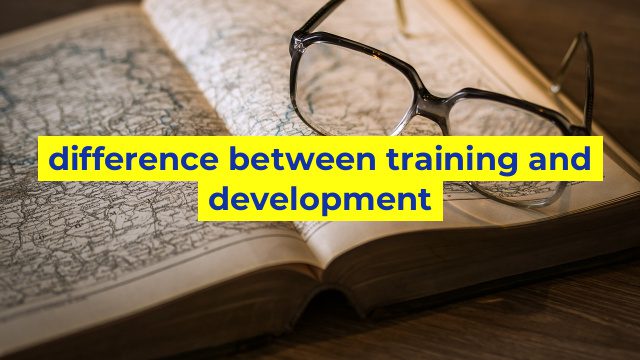The Difference Between Training and Development
Introduction
In today’s competitive business environment, organizations strive to enhance the competencies of their workforce to achieve their goals. One way of doing this is through training and development programs. While these two terms are often used interchangeably, they are not the same thing. In this article, we will explore the differences between training and development and their significance in the workplace.
Definitions
Training is a process that aims to equip an individual with the necessary skills, knowledge, and abilities to perform a specific job function. The focus of training is on immediate applicability and is usually delivered in a structured setting, such as a classroom or online training module.
Development, on the other hand, refers to a long-term process that aims to improve an individual’s overall skills, knowledge, and abilities to enable them to take on new challenges and responsibilities. The focus of development is on enhancing an individual’s potential and is usually delivered through mentoring, coaching, job rotations, and other experiential learning opportunities.
Significance
Understanding the difference between training and development is crucial for organizations as it can have a significant impact on their performance. While training is essential for building a skilled workforce, development is crucial for creating leaders and improving organizational effectiveness.
Training can help in addressing any knowledge and skill gaps within a workforce, thereby improving their performance and productivity. For example, if an organization introduces a new software system, training employees on how to use it effectively is essential to achieve higher efficiency and accuracy.
Development, on the other hand, focuses on building future leaders within an organization. Employees who have received development opportunities are more likely to be engaged, motivated, and loyal to their organization. These individuals possess a broader knowledge base, expanded skill set, and the ability to adapt to changing conditions, making them valuable assets to their organization.
Conclusion
In summary, training and development are two essential components of building a skilled and effective workforce. While they are closely related, they have distinct differences that determine their respective contributions to an organization. Understanding these distinctions is essential in developing a comprehensive strategy that ensures organizations have the right employee development programs in place to meet their goals.
Table difference between training and development
| Training | Development |
|---|---|
| Training is mostly focused on improving specific skills or knowledge related to a job or task. | Development is focused on the overall growth and improvement of an employee, which includes skills, knowledge, attitude and behavior. |
| Training is typically designed to provide the necessary skills for an employee to perform their current job more effectively. | Development is intended to develop employees for future roles and to prepare them for higher positions within the organization. |
| Training is often provided to new employees or those who are learning a new skill or process. | Development is usually offered to employees who have demonstrated potential for advancement in their careers. |
| Training programs are shorter in duration and more focused on specific topics or skills. | Development programs are usually longer in duration and more comprehensive, covering a wider range of skills and topics. |
| Training is often mandatory and requires employees to learn specific skills or knowledge to perform their job effectively. | Development is usually voluntary, and employees choose to participate to improve their skills and career prospects. |

